Abstract
Thromboregulatory physiology is essentially a function of the blood vessel wall. Constitutive endothelial cell activities maintain blood fluidity by down regulating the initiation as well as, the propagation of blood coagulation. The major systems involved include: the Protein C, TFPI, plasmin generating and antithrombin pathways, all of which are focused on the cell membrane. Altered regulation of these endothelial functions forms the basis of the pathophysiologic events associated with the inherited primary hypercoagulable states. Secondary hypercoagulable syndromes occurring in various clinical states with conversion to a vascular thrombogenic phenotype reflect non constitutive activated endothelial cell functions with concomitant down regulation of the constitutive anticoagulant surface activity. So called idiopathic clinical thrombosis in most circumstances represents multi hit events in which specific genetic abnormalities or polymorphisms together with specific acquired alterations in geographically distinct endothelial cell beds culminate in a recognizable coagulation phenotype.
Full text
PDF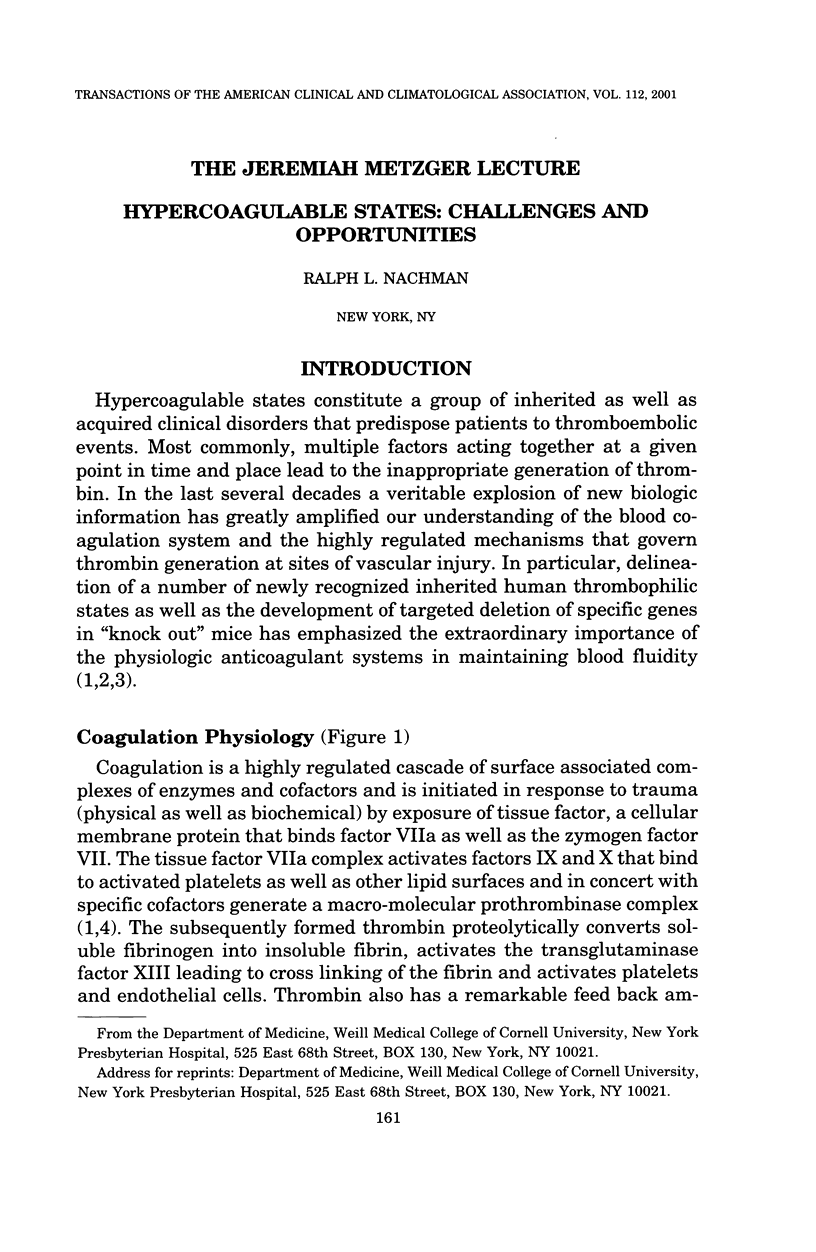

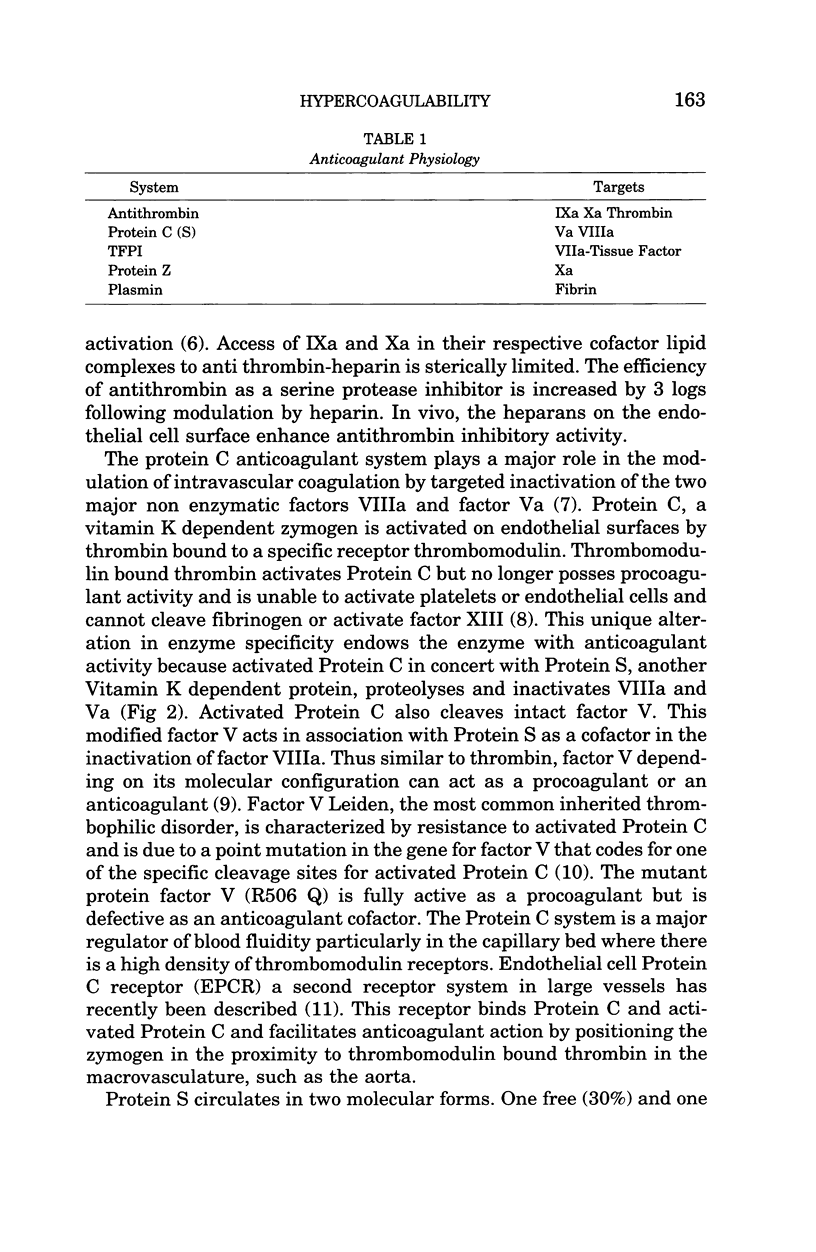
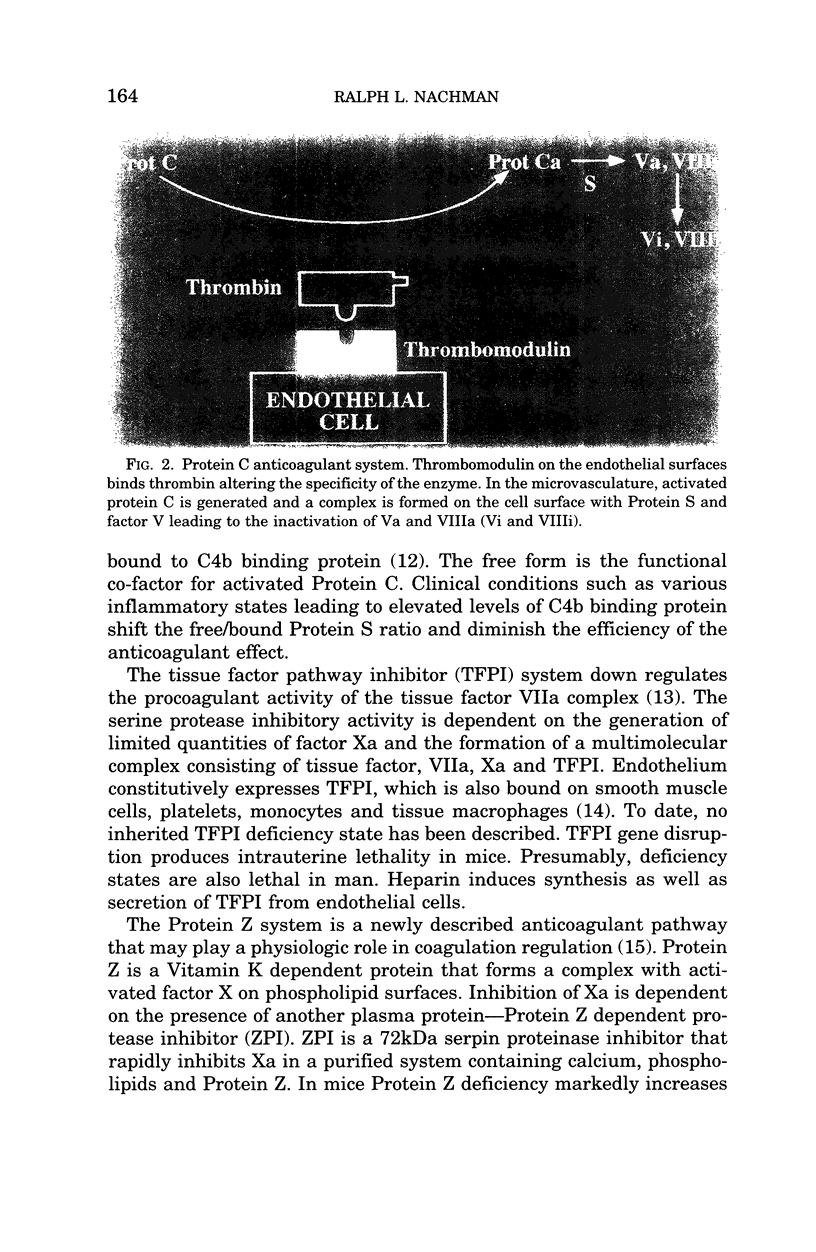
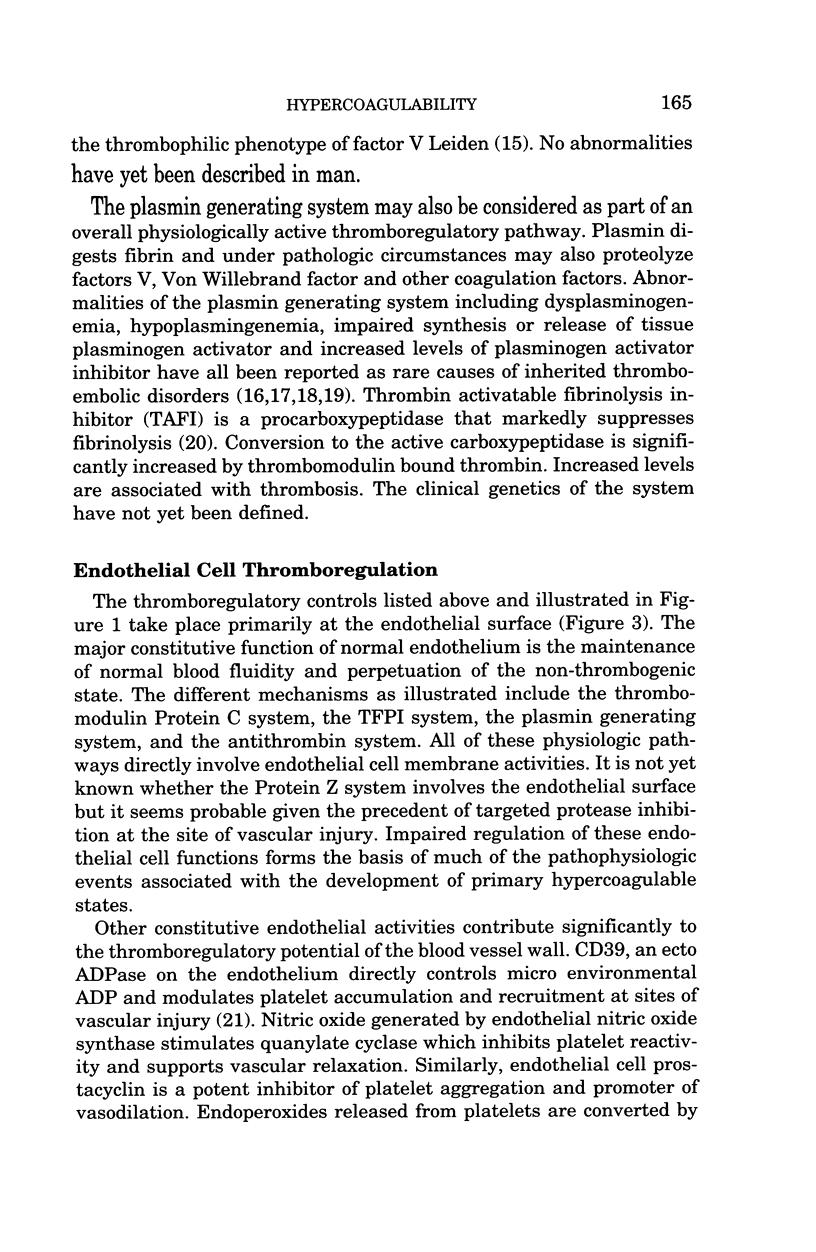
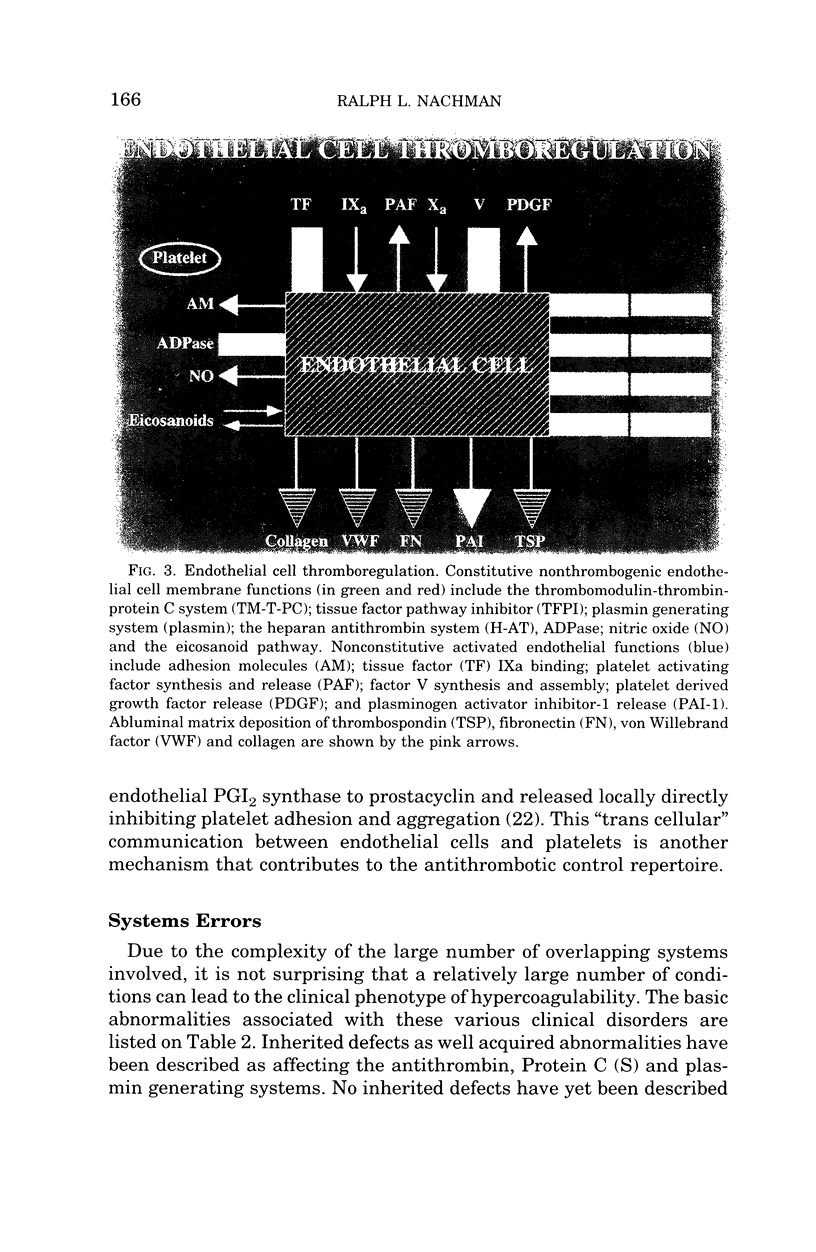
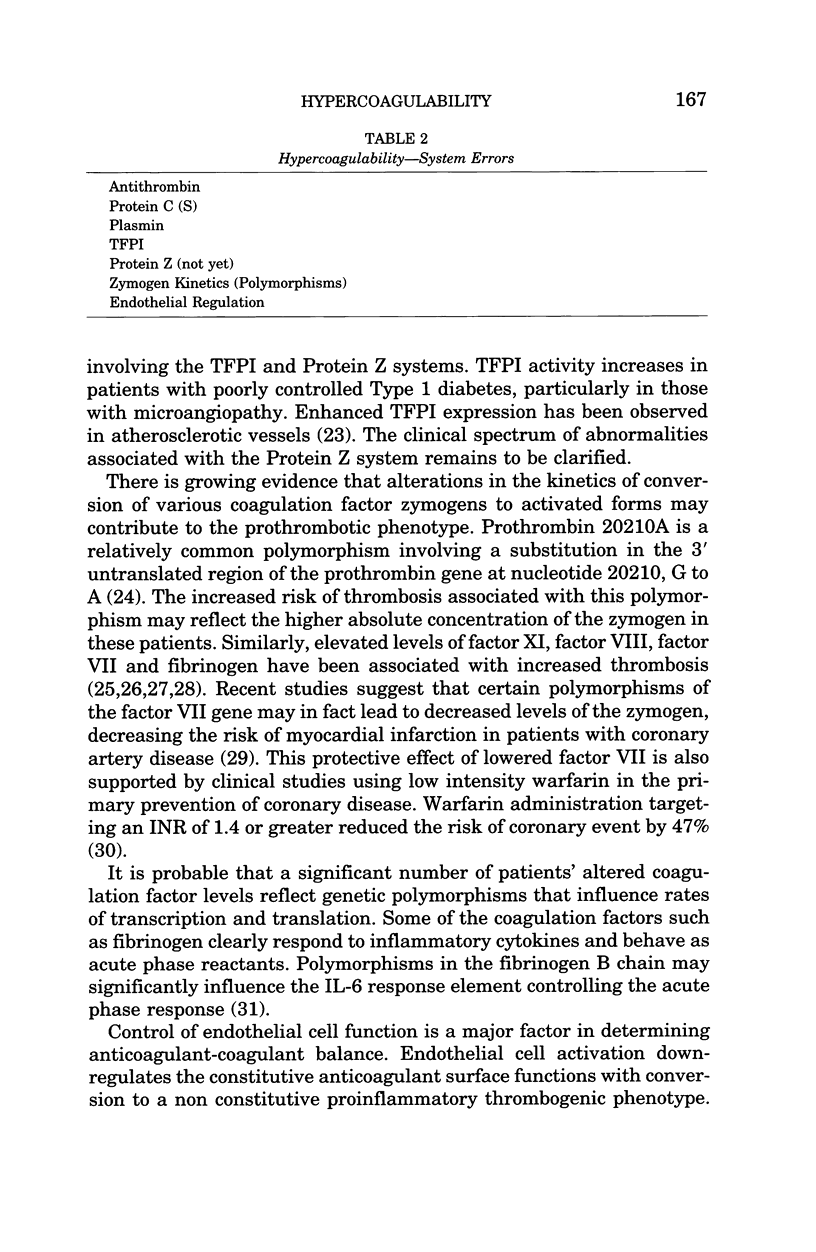
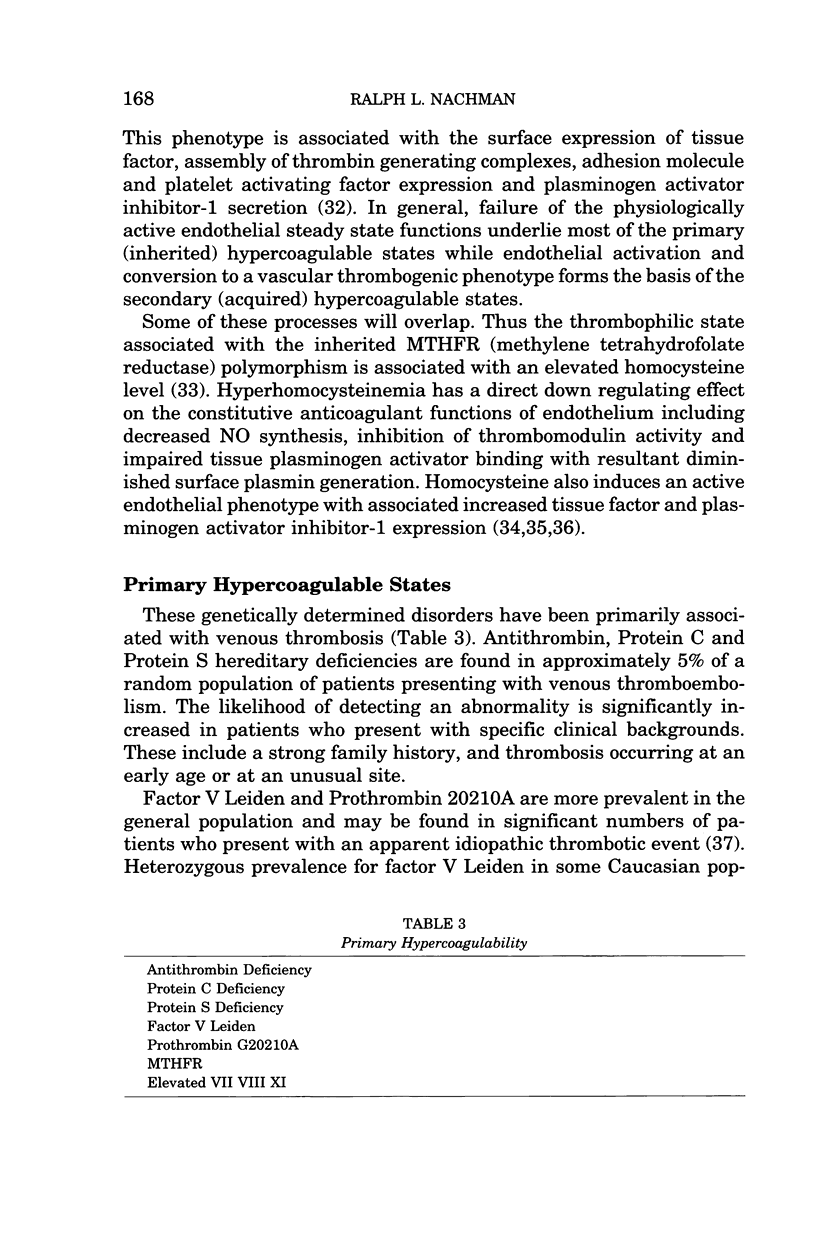
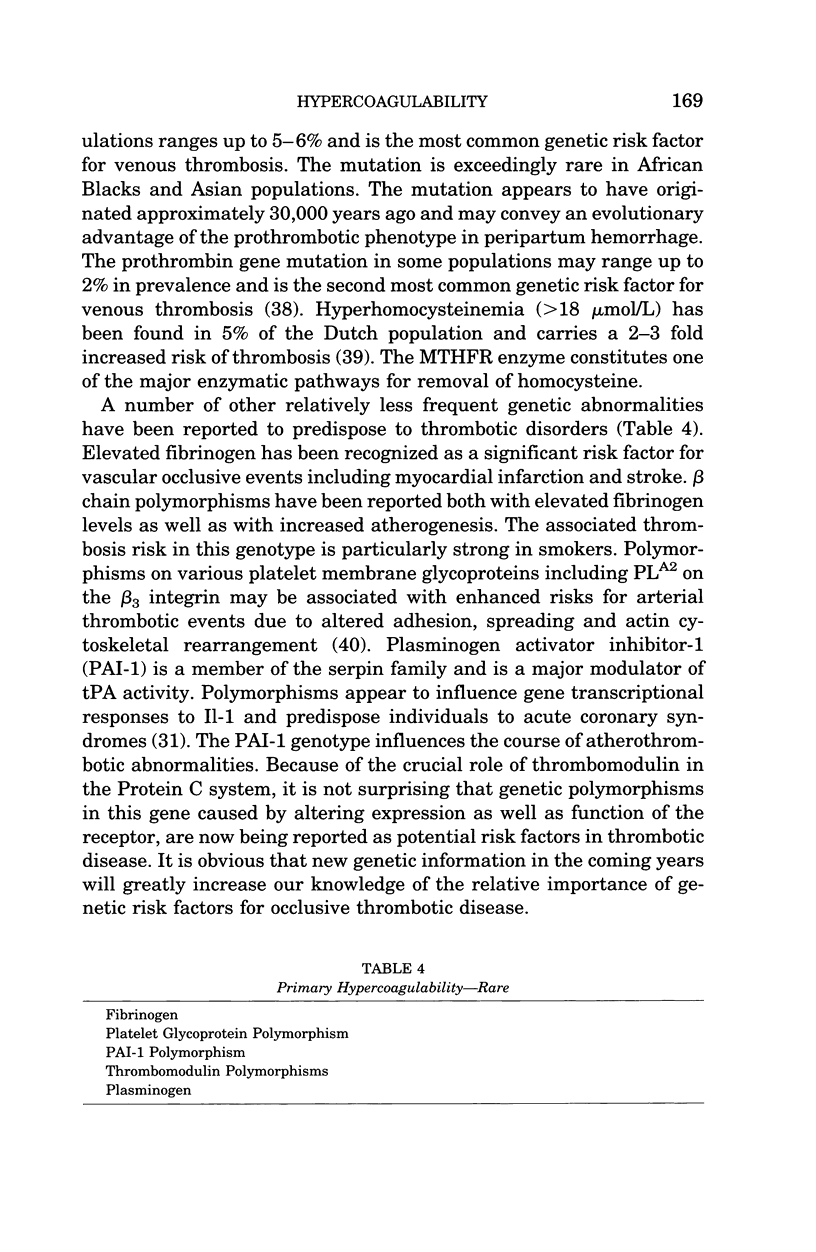
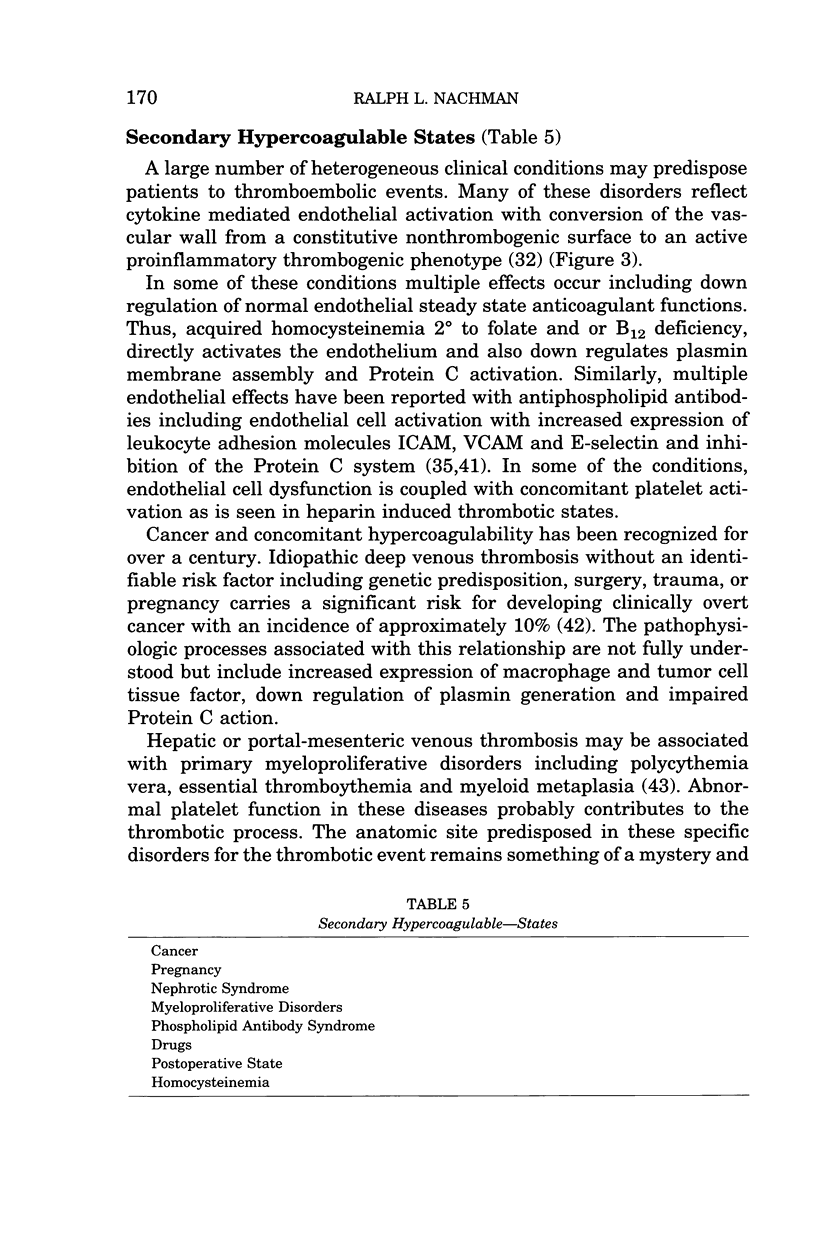
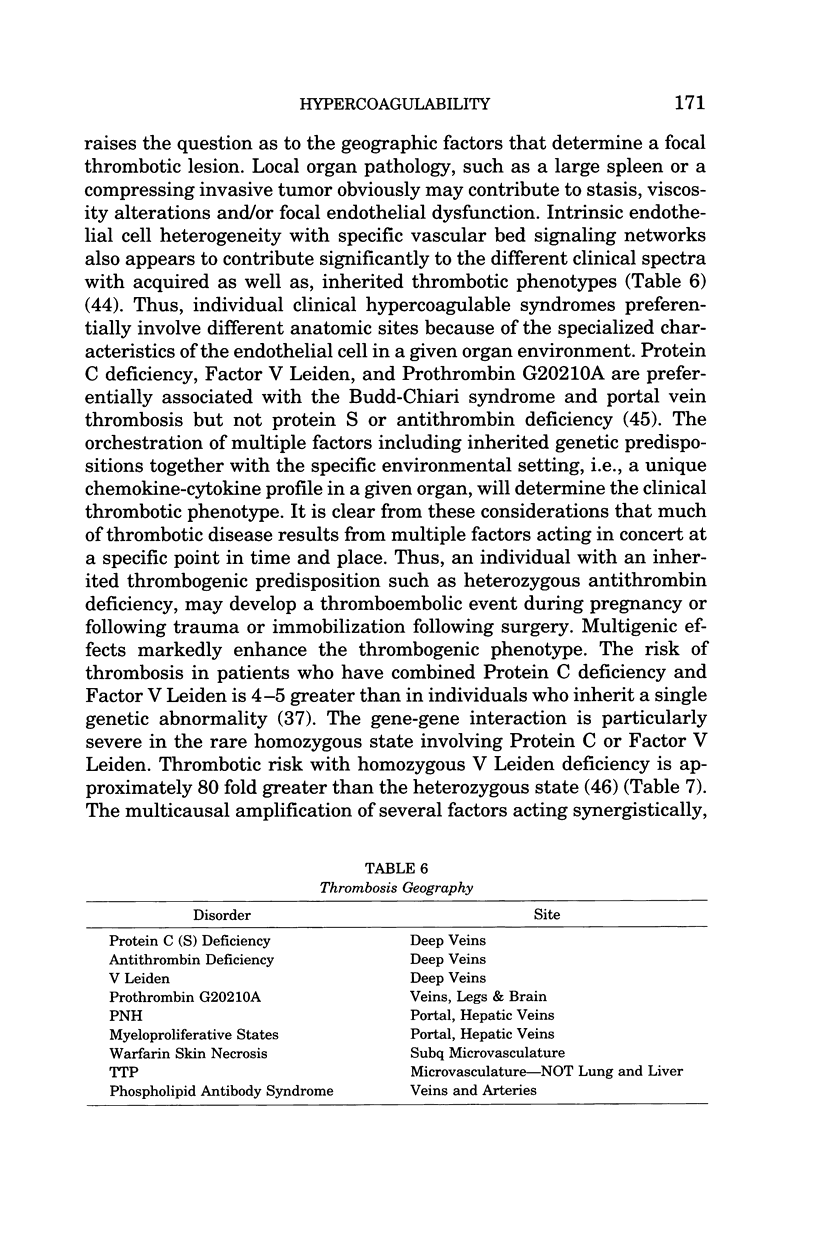
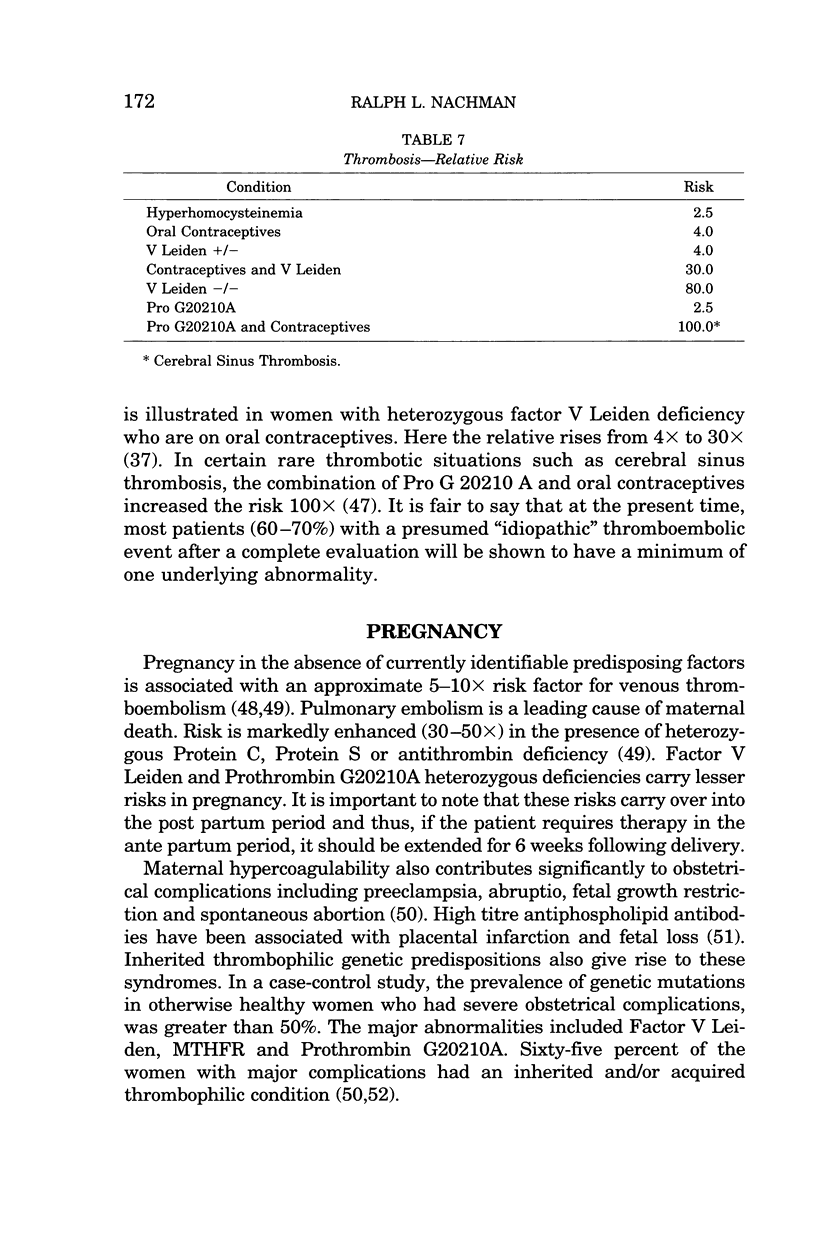
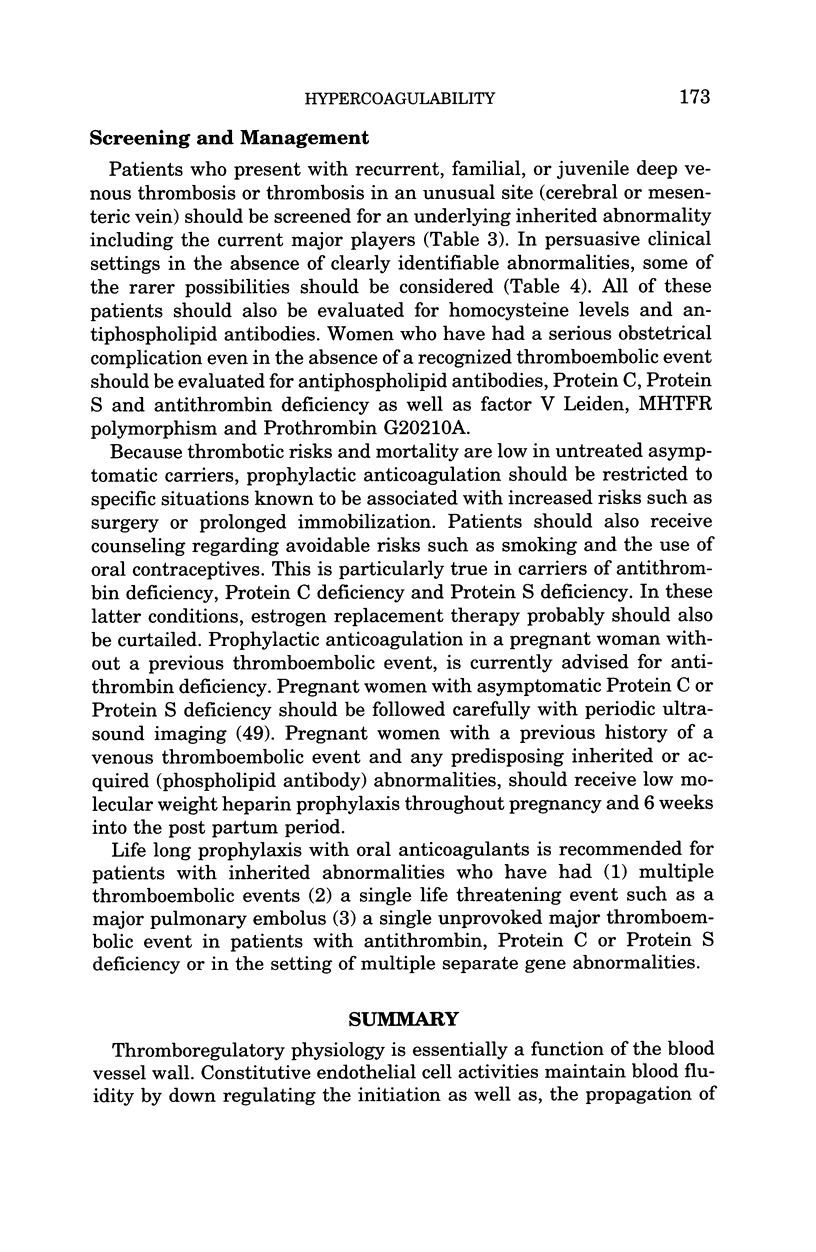
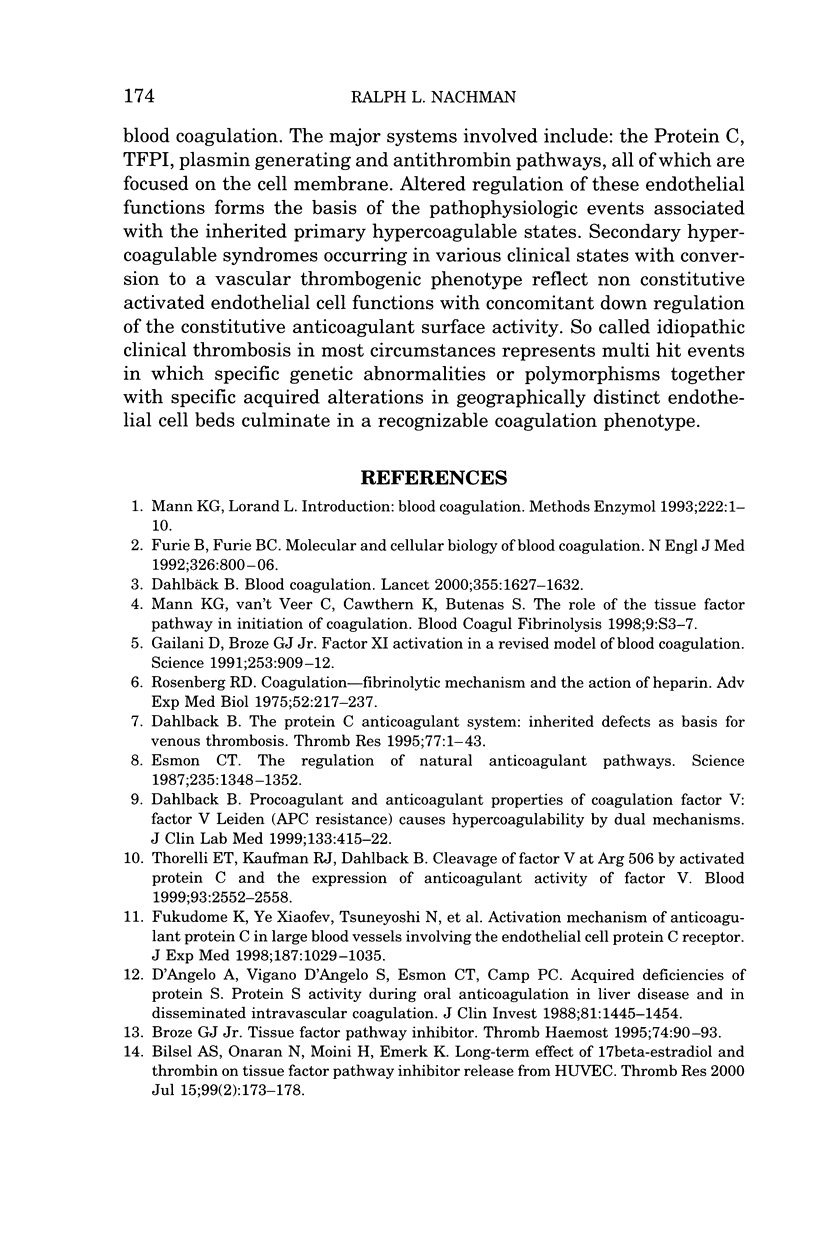
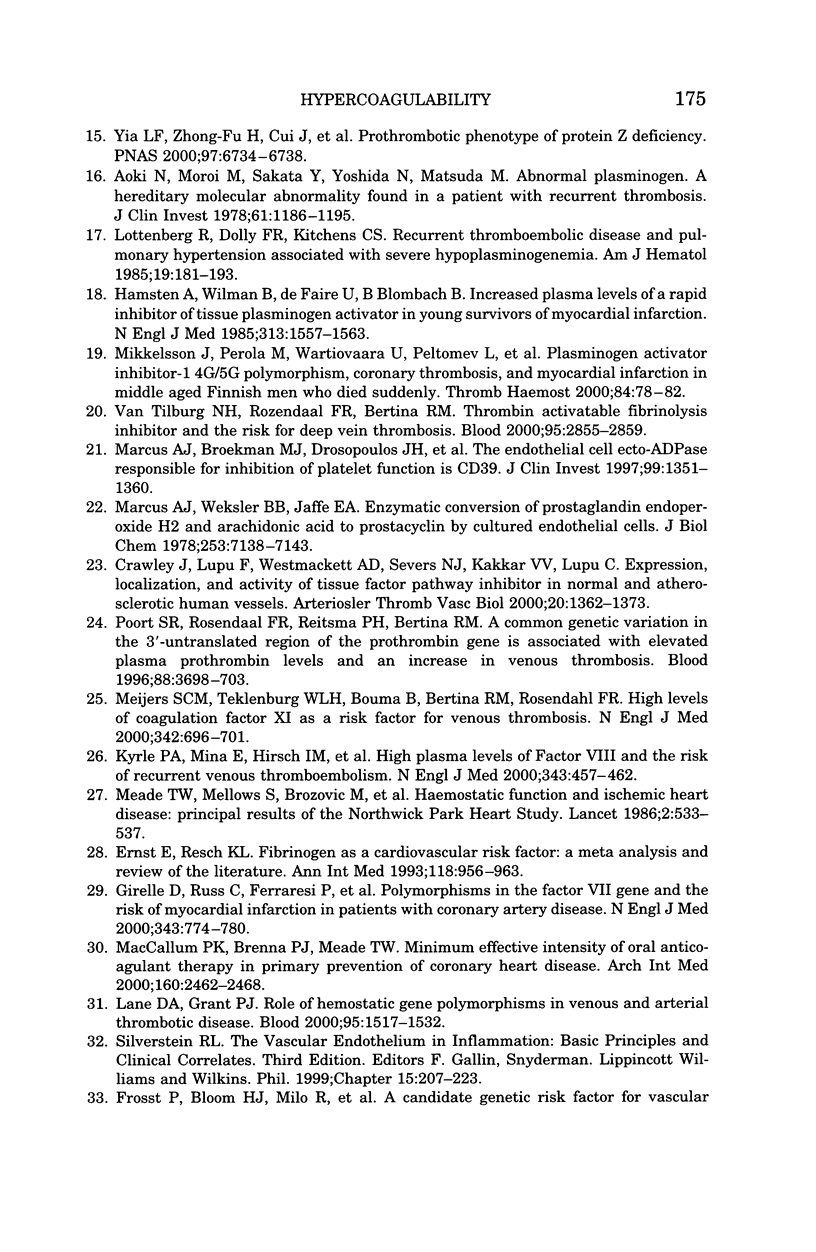
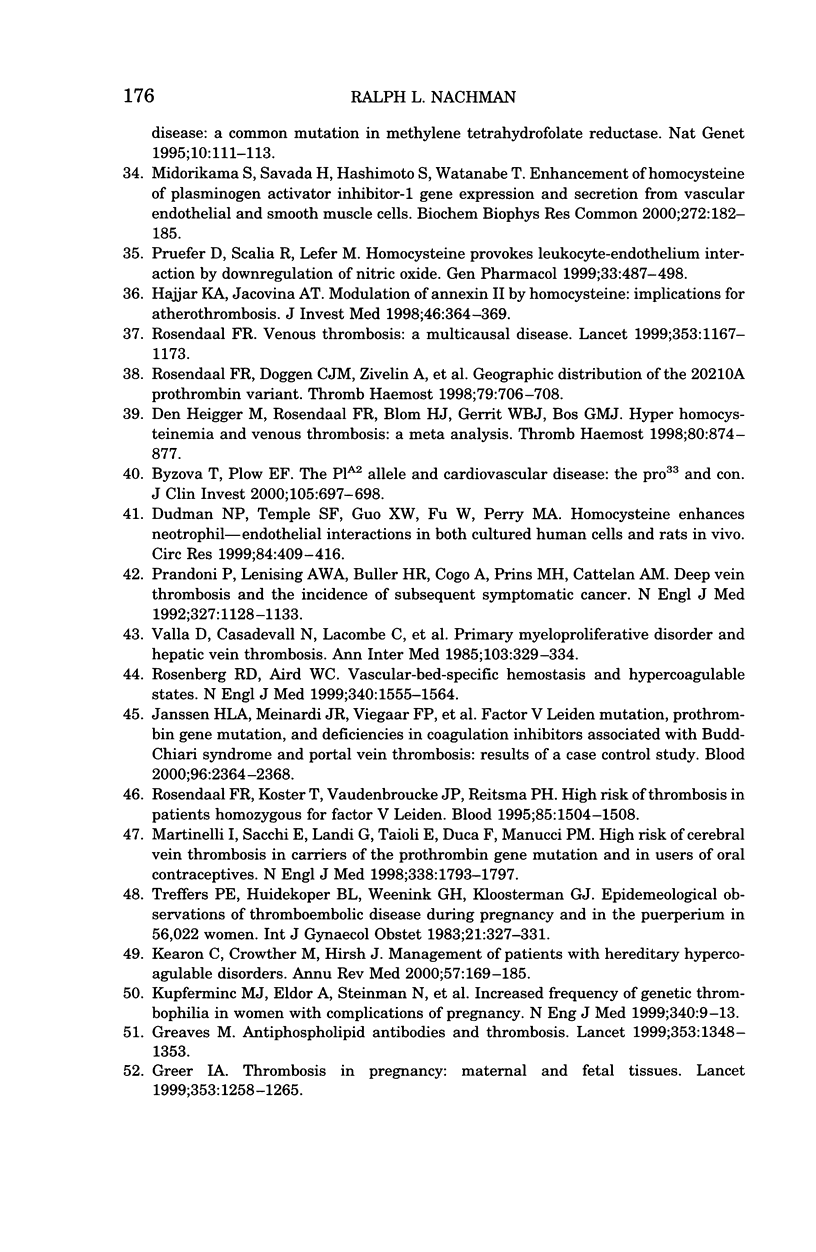
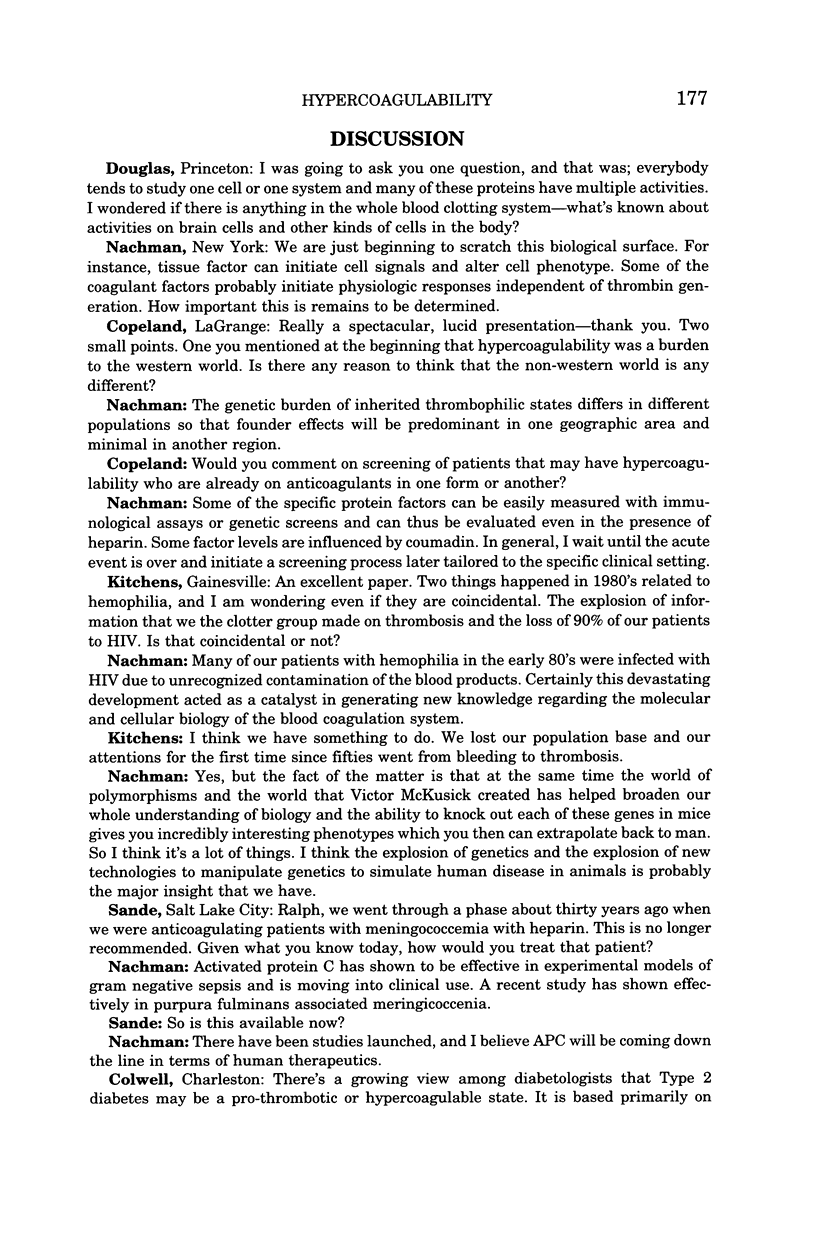
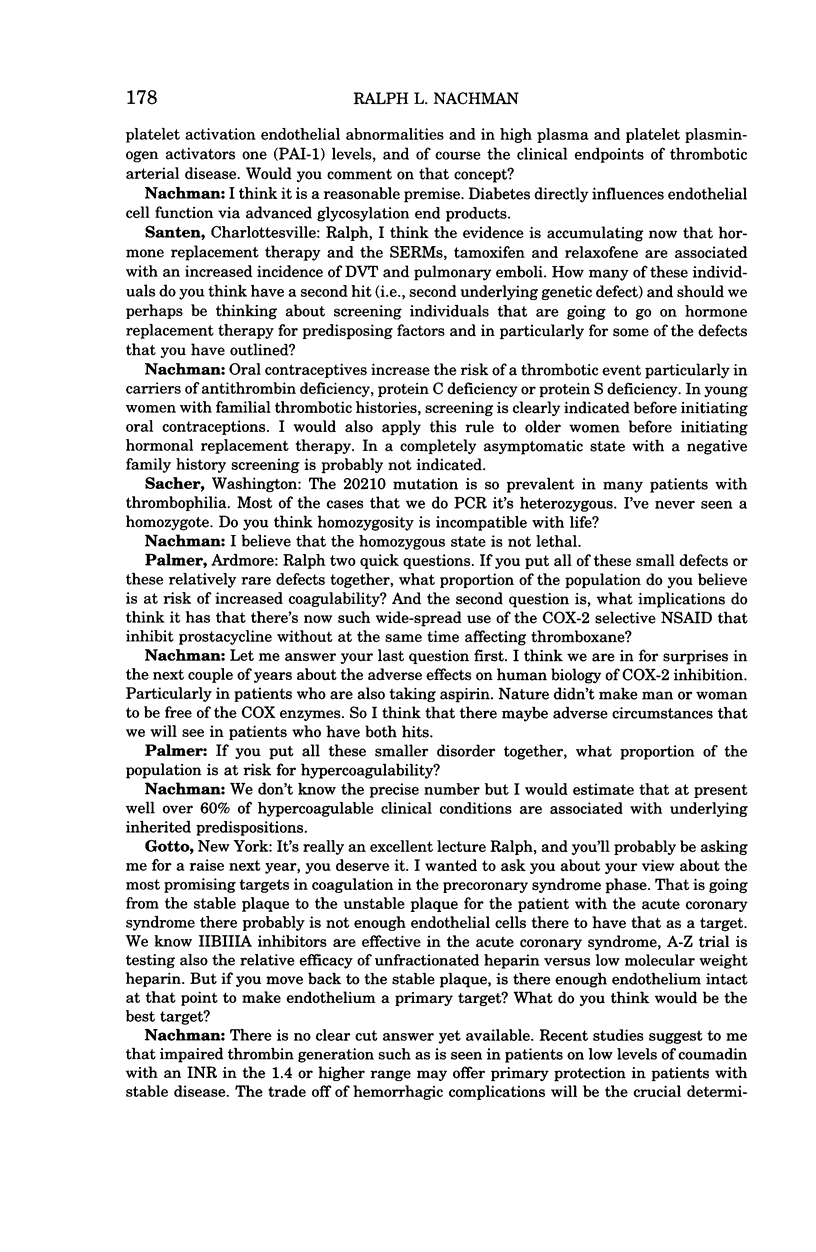
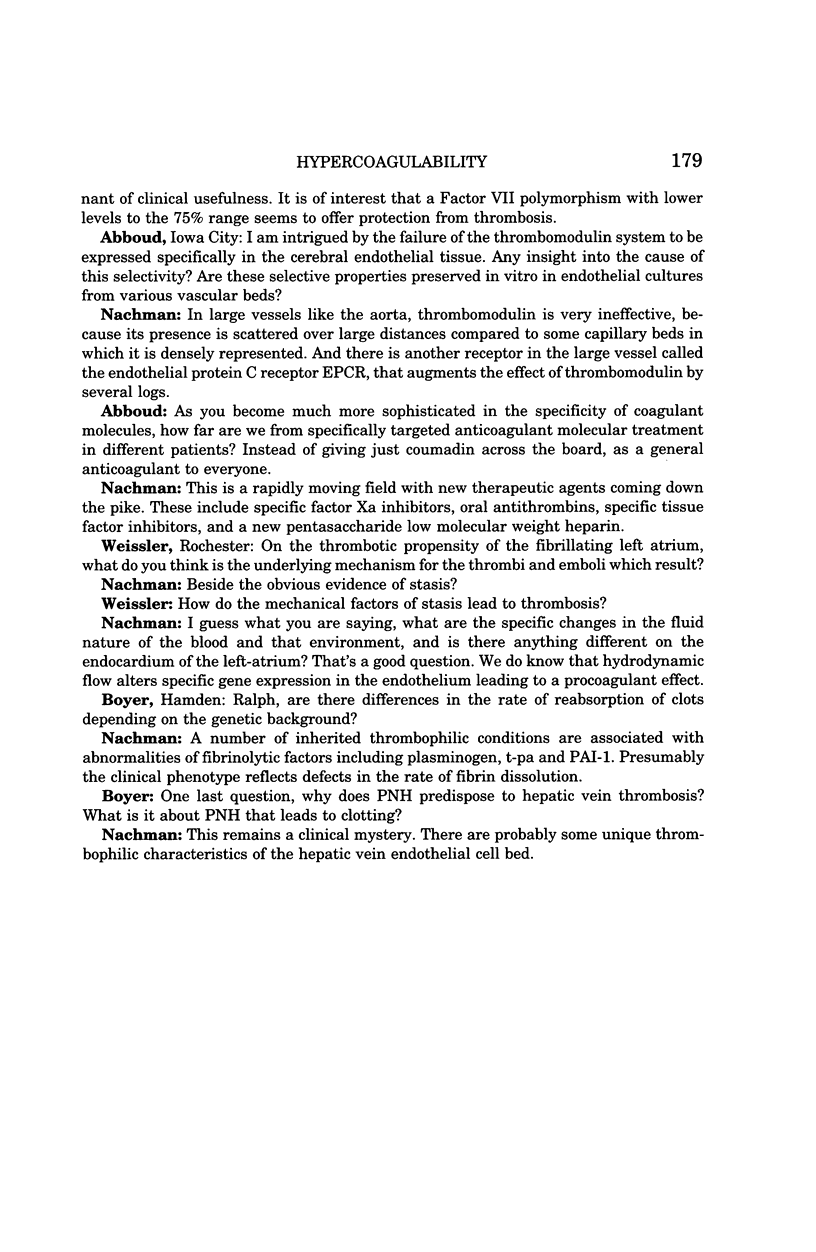
Images in this article
Selected References
These references are in PubMed. This may not be the complete list of references from this article.
- Aoki N., Moroi M., Sakata Y., Yoshida N., Matsuda M. Abnormal plasminogen. A hereditary molecular abnormality found in a patient with recurrent thrombosis. J Clin Invest. 1978 May;61(5):1186–1195. doi: 10.1172/JCI109034. [DOI] [PMC free article] [PubMed] [Google Scholar]
- Bilsel A. S., Onaran N., Moini H., Emerk K. Long-term effect of 17beta-estradiol and thrombin on tissue factor pathway inhibitor release from HUVEC. Thromb Res. 2000 Jul 15;99(2):173–178. doi: 10.1016/s0049-3848(00)00228-0. [DOI] [PubMed] [Google Scholar]
- Broze G. J., Jr Tissue factor pathway inhibitor. Thromb Haemost. 1995 Jul;74(1):90–93. [PubMed] [Google Scholar]
- Byzova T. V., Plow E. F. The Pl(A2) allele and cardiovascular disease: the pro(33) and con. J Clin Invest. 2000 Mar;105(6):697–698. doi: 10.1172/JCI9629. [DOI] [PMC free article] [PubMed] [Google Scholar]
- Crawley J., Lupu F., Westmuckett A. D., Severs N. J., Kakkar V. V., Lupu C. Expression, localization, and activity of tissue factor pathway inhibitor in normal and atherosclerotic human vessels. Arterioscler Thromb Vasc Biol. 2000 May;20(5):1362–1373. doi: 10.1161/01.atv.20.5.1362. [DOI] [PubMed] [Google Scholar]
- D'Angelo A., Vigano-D'Angelo S., Esmon C. T., Comp P. C. Acquired deficiencies of protein S. Protein S activity during oral anticoagulation, in liver disease, and in disseminated intravascular coagulation. J Clin Invest. 1988 May;81(5):1445–1454. doi: 10.1172/JCI113475. [DOI] [PMC free article] [PubMed] [Google Scholar]
- Dahlbäck B. Blood coagulation. Lancet. 2000 May 6;355(9215):1627–1632. doi: 10.1016/S0140-6736(00)02225-X. [DOI] [PubMed] [Google Scholar]
- Dahlbäck B. Procoagulant and anticoagulant properties of coagulation factor V: factor V Leiden (APC resistance) causes hypercoagulability by dual mechanisms. J Lab Clin Med. 1999 May;133(5):415–422. doi: 10.1016/s0022-2143(99)90018-5. [DOI] [PubMed] [Google Scholar]
- Dahlbäck B. The protein C anticoagulant system: inherited defects as basis for venous thrombosis. Thromb Res. 1995 Jan 1;77(1):1–43. doi: 10.1016/0049-3848(94)00138-4. [DOI] [PubMed] [Google Scholar]
- Dudman N. P., Temple S. E., Guo X. W., Fu W., Perry M. A. Homocysteine enhances neutrophil-endothelial interactions in both cultured human cells and rats In vivo. Circ Res. 1999 Mar 5;84(4):409–416. doi: 10.1161/01.res.84.4.409. [DOI] [PubMed] [Google Scholar]
- Ernst E., Resch K. L. Fibrinogen as a cardiovascular risk factor: a meta-analysis and review of the literature. Ann Intern Med. 1993 Jun 15;118(12):956–963. doi: 10.7326/0003-4819-118-12-199306150-00008. [DOI] [PubMed] [Google Scholar]
- Esmon C. T. The regulation of natural anticoagulant pathways. Science. 1987 Mar 13;235(4794):1348–1352. doi: 10.1126/science.3029867. [DOI] [PubMed] [Google Scholar]
- Frosst P., Blom H. J., Milos R., Goyette P., Sheppard C. A., Matthews R. G., Boers G. J., den Heijer M., Kluijtmans L. A., van den Heuvel L. P. A candidate genetic risk factor for vascular disease: a common mutation in methylenetetrahydrofolate reductase. Nat Genet. 1995 May;10(1):111–113. doi: 10.1038/ng0595-111. [DOI] [PubMed] [Google Scholar]
- Fukudome K., Ye X., Tsuneyoshi N., Tokunaga O., Sugawara K., Mizokami H., Kimoto M. Activation mechanism of anticoagulant protein C in large blood vessels involving the endothelial cell protein C receptor. J Exp Med. 1998 Apr 6;187(7):1029–1035. doi: 10.1084/jem.187.7.1029. [DOI] [PMC free article] [PubMed] [Google Scholar]
- Furie B., Furie B. C. Molecular and cellular biology of blood coagulation. N Engl J Med. 1992 Mar 19;326(12):800–806. doi: 10.1056/NEJM199203193261205. [DOI] [PubMed] [Google Scholar]
- Gailani D., Broze G. J., Jr Factor XI activation in a revised model of blood coagulation. Science. 1991 Aug 23;253(5022):909–912. doi: 10.1126/science.1652157. [DOI] [PubMed] [Google Scholar]
- Girelli D., Russo C., Ferraresi P., Olivieri O., Pinotti M., Friso S., Manzato F., Mazzucco A., Bernardi F., Corrocher R. Polymorphisms in the factor VII gene and the risk of myocardial infarction in patients with coronary artery disease. N Engl J Med. 2000 Sep 14;343(11):774–780. doi: 10.1056/NEJM200009143431104. [DOI] [PubMed] [Google Scholar]
- Greaves M. Antiphospholipid antibodies and thrombosis. Lancet. 1999 Apr 17;353(9161):1348–1353. doi: 10.1016/S0140-6736(98)10362-8. [DOI] [PubMed] [Google Scholar]
- Greer I. A. Thrombosis in pregnancy: maternal and fetal issues. Lancet. 1999 Apr 10;353(9160):1258–1265. doi: 10.1016/S0140-6736(98)10265-9. [DOI] [PubMed] [Google Scholar]
- Hajjar K. A., Jacovina A. T. Modulation of annexin II by homocysteine: implications for atherothrombosis. J Investig Med. 1998 Oct;46(8):364–369. [PubMed] [Google Scholar]
- Hamsten A., Wiman B., de Faire U., Blombäck M. Increased plasma levels of a rapid inhibitor of tissue plasminogen activator in young survivors of myocardial infarction. N Engl J Med. 1985 Dec 19;313(25):1557–1563. doi: 10.1056/NEJM198512193132501. [DOI] [PubMed] [Google Scholar]
- Janssen H. L., Meinardi J. R., Vleggaar F. P., van Uum S. H., Haagsma E. B., van Der Meer F. J., van Hattum J., Chamuleau R. A., Adang R. P., Vandenbroucke J. P. Factor V Leiden mutation, prothrombin gene mutation, and deficiencies in coagulation inhibitors associated with Budd-Chiari syndrome and portal vein thrombosis: results of a case-control study. Blood. 2000 Oct 1;96(7):2364–2368. [PubMed] [Google Scholar]
- Kearon C., Crowther M., Hirsh J. Management of patients with hereditary hypercoagulable disorders. Annu Rev Med. 2000;51:169–185. doi: 10.1146/annurev.med.51.1.169. [DOI] [PubMed] [Google Scholar]
- Kupferminc M. J., Eldor A., Steinman N., Many A., Bar-Am A., Jaffa A., Fait G., Lessing J. B. Increased frequency of genetic thrombophilia in women with complications of pregnancy. N Engl J Med. 1999 Jan 7;340(1):9–13. doi: 10.1056/NEJM199901073400102. [DOI] [PubMed] [Google Scholar]
- Kyrle P. A., Minar E., Hirschl M., Bialonczyk C., Stain M., Schneider B., Weltermann A., Speiser W., Lechner K., Eichinger S. High plasma levels of factor VIII and the risk of recurrent venous thromboembolism. N Engl J Med. 2000 Aug 17;343(7):457–462. doi: 10.1056/NEJM200008173430702. [DOI] [PubMed] [Google Scholar]
- Lane D. A., Grant P. J. Role of hemostatic gene polymorphisms in venous and arterial thrombotic disease. Blood. 2000 Mar 1;95(5):1517–1532. [PubMed] [Google Scholar]
- Lottenberg R., Dolly F. R., Kitchens C. S. Recurring thromboembolic disease and pulmonary hypertension associated with severe hypoplasminogenemia. Am J Hematol. 1985 Jun;19(2):181–193. doi: 10.1002/ajh.2830190211. [DOI] [PubMed] [Google Scholar]
- MacCallum P. K., Brennan P. J., Meade T. W. Minimum effective intensity of oral anticoagulant therapy in primary prevention of coronary heart disease. Arch Intern Med. 2000 Sep 11;160(16):2462–2468. doi: 10.1001/archinte.160.16.2462. [DOI] [PubMed] [Google Scholar]
- Mann K. G., Lorand L. Introduction: blood coagulation. Methods Enzymol. 1993;222:1–10. doi: 10.1016/0076-6879(93)22003-x. [DOI] [PubMed] [Google Scholar]
- Marcus A. J., Broekman M. J., Drosopoulos J. H., Islam N., Alyonycheva T. N., Safier L. B., Hajjar K. A., Posnett D. N., Schoenborn M. A., Schooley K. A. The endothelial cell ecto-ADPase responsible for inhibition of platelet function is CD39. J Clin Invest. 1997 Mar 15;99(6):1351–1360. doi: 10.1172/JCI119294. [DOI] [PMC free article] [PubMed] [Google Scholar]
- Marcus A. J., Weksler B. B., Jaffe E. A. Enzymatic conversion of prostaglandin endoperoxide H2 and arachidonic acid to prostacyclin by cultured human endothelial cells. J Biol Chem. 1978 Oct 25;253(20):7138–7141. [PubMed] [Google Scholar]
- Martinelli I., Sacchi E., Landi G., Taioli E., Duca F., Mannucci P. M. High risk of cerebral-vein thrombosis in carriers of a prothrombin-gene mutation and in users of oral contraceptives. N Engl J Med. 1998 Jun 18;338(25):1793–1797. doi: 10.1056/NEJM199806183382502. [DOI] [PubMed] [Google Scholar]
- Meade T. W., Mellows S., Brozovic M., Miller G. J., Chakrabarti R. R., North W. R., Haines A. P., Stirling Y., Imeson J. D., Thompson S. G. Haemostatic function and ischaemic heart disease: principal results of the Northwick Park Heart Study. Lancet. 1986 Sep 6;2(8506):533–537. doi: 10.1016/s0140-6736(86)90111-x. [DOI] [PubMed] [Google Scholar]
- Meijers J. C., Tekelenburg W. L., Bouma B. N., Bertina R. M., Rosendaal F. R. High levels of coagulation factor XI as a risk factor for venous thrombosis. N Engl J Med. 2000 Mar 9;342(10):696–701. doi: 10.1056/NEJM200003093421004. [DOI] [PubMed] [Google Scholar]
- Midorikawa S., Sanada H., Hashimoto S., Watanabe T. Enhancement by homocysteine of plasminogen activator inhibitor-1 gene expression and secretion from vascular endothelial and smooth muscle cells. Biochem Biophys Res Commun. 2000 May 27;272(1):182–185. doi: 10.1006/bbrc.2000.2753. [DOI] [PubMed] [Google Scholar]
- Mikkelsson J., Perola M., Wartiovaara U., Peltonen L., Palotie A., Penttilä A., Karhunen P. J. Plasminogen activator inhibitor-1 (PAI-1) 4G/5G polymorphism, coronary thrombosis, and myocardial infarction in middle-aged Finnish men who died suddenly. Thromb Haemost. 2000 Jul;84(1):78–82. [PubMed] [Google Scholar]
- Poort S. R., Rosendaal F. R., Reitsma P. H., Bertina R. M. A common genetic variation in the 3'-untranslated region of the prothrombin gene is associated with elevated plasma prothrombin levels and an increase in venous thrombosis. Blood. 1996 Nov 15;88(10):3698–3703. [PubMed] [Google Scholar]
- Prandoni P., Lensing A. W., Büller H. R., Cogo A., Prins M. H., Cattelan A. M., Cuppini S., Noventa F., ten Cate J. W. Deep-vein thrombosis and the incidence of subsequent symptomatic cancer. N Engl J Med. 1992 Oct 15;327(16):1128–1133. doi: 10.1056/NEJM199210153271604. [DOI] [PubMed] [Google Scholar]
- Pruefer D., Scalia R., Lefer A. M. Homocysteine provokes leukocyte-endothelium interaction by downregulation of nitric oxide. Gen Pharmacol. 1999 Dec;33(6):487–498. doi: 10.1016/s0306-3623(99)00045-2. [DOI] [PubMed] [Google Scholar]
- Rosenberg R. D., Aird W. C. Vascular-bed--specific hemostasis and hypercoagulable states. N Engl J Med. 1999 May 20;340(20):1555–1564. doi: 10.1056/NEJM199905203402007. [DOI] [PubMed] [Google Scholar]
- Rosenberg R. D. Coagulation-fibrinolytic mechanism and the action of heparin. Adv Exp Med Biol. 1975;52:217–237. doi: 10.1007/978-1-4684-0946-8_18. [DOI] [PubMed] [Google Scholar]
- Rosendaal F. R., Doggen C. J., Zivelin A., Arruda V. R., Aiach M., Siscovick D. S., Hillarp A., Watzke H. H., Bernardi F., Cumming A. M. Geographic distribution of the 20210 G to A prothrombin variant. Thromb Haemost. 1998 Apr;79(4):706–708. [PubMed] [Google Scholar]
- Rosendaal F. R., Koster T., Vandenbroucke J. P., Reitsma P. H. High risk of thrombosis in patients homozygous for factor V Leiden (activated protein C resistance) Blood. 1995 Mar 15;85(6):1504–1508. [PubMed] [Google Scholar]
- Rosendaal F. R. Venous thrombosis: a multicausal disease. Lancet. 1999 Apr 3;353(9159):1167–1173. doi: 10.1016/s0140-6736(98)10266-0. [DOI] [PubMed] [Google Scholar]
- Thorelli E., Kaufman R. J., Dahlbäck B. Cleavage of factor V at Arg 506 by activated protein C and the expression of anticoagulant activity of factor V. Blood. 1999 Apr 15;93(8):2552–2558. [PubMed] [Google Scholar]
- Treffers P. E., Huidekoper B. L., Weenink G. H., Kloosterman G. J. Epidemiological observations of thrombo-embolic disease during pregnancy and in the puerperium, in 56,022 women. Int J Gynaecol Obstet. 1983 Aug;21(4):327–331. doi: 10.1016/0020-7292(83)90024-3. [DOI] [PubMed] [Google Scholar]
- Valla D., Casadevall N., Lacombe C., Varet B., Goldwasser E., Franco D., Maillard J. N., Pariente E. A., Leporrier M., Rueff B. Primary myeloproliferative disorder and hepatic vein thrombosis. A prospective study of erythroid colony formation in vitro in 20 patients with Budd-Chiari syndrome. Ann Intern Med. 1985 Sep;103(3):329–334. doi: 10.7326/0003-4819-103-3-329. [DOI] [PubMed] [Google Scholar]
- Yin Z. F., Huang Z. F., Cui J., Fiehler R., Lasky N., Ginsburg D., Broze G. J., Jr Prothrombotic phenotype of protein Z deficiency. Proc Natl Acad Sci U S A. 2000 Jun 6;97(12):6734–6738. doi: 10.1073/pnas.120081897. [DOI] [PMC free article] [PubMed] [Google Scholar]
- den Heijer M., Rosendaal F. R., Blom H. J., Gerrits W. B., Bos G. M. Hyperhomocysteinemia and venous thrombosis: a meta-analysis. Thromb Haemost. 1998 Dec;80(6):874–877. [PubMed] [Google Scholar]
- van Tilburg N. H., Rosendaal F. R., Bertina R. M. Thrombin activatable fibrinolysis inhibitor and the risk for deep vein thrombosis. Blood. 2000 May 1;95(9):2855–2859. [PubMed] [Google Scholar]





